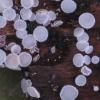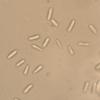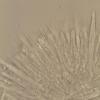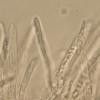
30-12-2025 09:04
Hello.A Pyrenomycete sprouting sparsely but very d

29-12-2025 17:44
Isabelle CharissouBonjour,J'aimerais savoir si d'autres personnes au

12-11-2021 00:03
Lepista ZacariasHi everybody,A week ago in my fiels trip I noticed

29-12-2025 17:12
 Bernard CLESSE
Bernard CLESSE
Bonjour à toutes et tous,Pourriez-vous m'aider à

29-12-2025 17:01
Gernot FriebesHi,I'm looking for help with this hyphomycete with

29-12-2025 08:30
Hello.A tiny ascomycete sprouting under Juniperus

29-12-2025 10:15
Hulda Caroline HolteHello, I found and collected this propoloid ascom

29-12-2025 09:38
Oskari VirtanenHi,could anyone help me identify this, I suspect P
 En madera de planifolio indeterminada.
En madera de planifolio indeterminada.Esporas 7-10 X 2-2,5 um, cilindricas.contenido aceite 0.
Ascas 52-65 X 5-6 um, IKI +, croziers +
Parafisis anchamente lanceoladas 7-8 um, que sobresalen de las ascas 10-20 um, Vbs -.
Pelos 80-100 X 4-4,5 um, septados, Vbs -
Parece próximo a L. virgineum, pero las esporas de esta colección parecen más anchas.
Alguna idea?
Saludos
Javier

Zotto

Saludos
Javier

I have a similar problem with Lachnum papyraceum collected on Picea abies (mountain forest in central Europe). Spore size in Nordic Macromycetes vol. 1 is 4-6 x 1-1.5 um; in an older description (Saccardo 1889) the length is 3-7 um.
Many spores are bigger in my collections, e.g. (6-) 8 x 2, 10 x 2 um, but some 5 x 1.5 or 8 x 1.5 also occur (these are inside asci and may not be mature). The width of most spores is rather 2 than 1.5 um. Everything else seems to fit L. papyraceum, but I do not have an experince with these species (do not have a more comprehensive key than Nordic Macromycetes).
Thanks,
Vaclav

The few records I have of that species vary in spore length betwee short and long-spored.
Here is an example, and I so far found no other name for it.
My spore range of the long-spored variant is:
7.5-11.7 x 1.7-2.6
Important is that the paraphyses and hairs contain strongly refractive VBs which cause the red-brown colouration in senescent apothecia.
Older apothecia became brownish after drying, and hymenium is quite dark in some cases. Only very young sporocarps are whitish even when dry.
Thank you for nice drawings.

But please use IKI for the apical ring because of the red reaction in some species.
The VB-guttules (vacuolar, not lipidic) in the living state are impossible to trace in herbarium material in Lachnum. Any granules you see in dried samples rehydrated in water or MLZ are of different origin and taxonomically useless.
The VBs induce the red-brown colour change in the dry or senescent state. Young apothecia when cautiously dried best keep the whitish original colour.
Zotto









